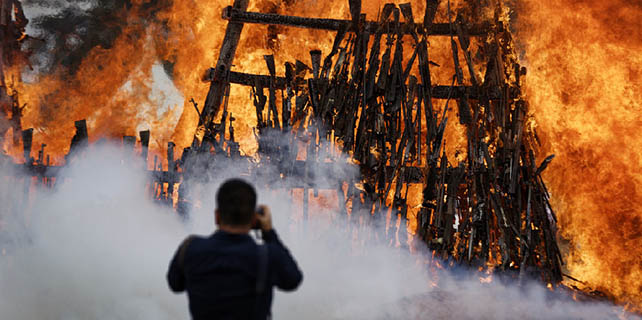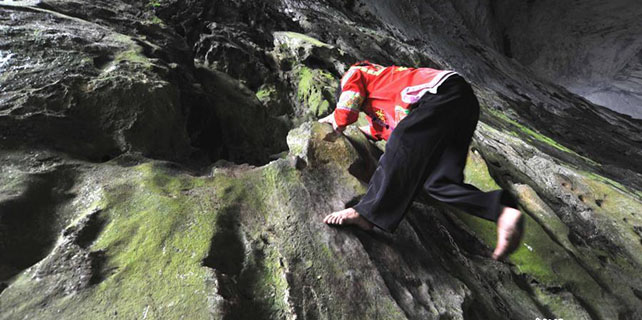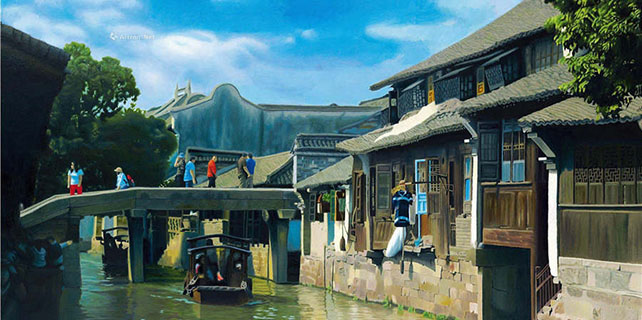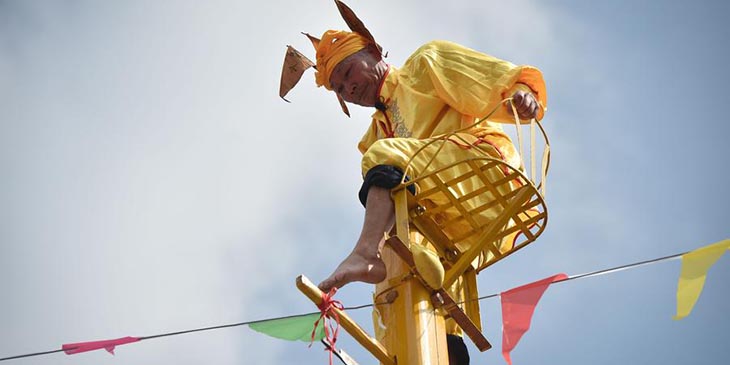Recovering China's WWII past
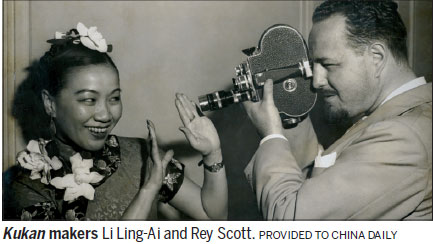
Much of China's World War II history may be lost forever and a new documentary brings to life the challenge of recovering mere scraps of it.
Finding Kukan chronicles fourth-generation Chinese-American filmmaker Robin Lung's quest to recover at least one copy of Kukan, the first documentary to receive an Academy Award — and the only Oscar-winning documentary with no known copies in existence.
Kukan — the Chinese term for heroic courage under bitter suffering — takes viewers behind the scenes of the Japanese invasion and occupation of the Chinese mainland starting with the aftermath of the Nanjing Massacre and ending with harrowing footage of the Aug 24, 1940 Japanese bombing of Chongqing.
But the documentary is really about the "unsung hero" behind the film, Hawaiian-born Li Ling-Ai, who is named as simply a "technical advisor" in the credits, but was really a producer, financer and inspiration for filmmaker and writer Rey Scott.
Scott, a St Louis-born roving freelance photojournalist, met Li Ling-Ai in Hawaii in 1937, and she convinced him that he should travel to China and tell the real story behind the Japanese occupation — get the world to understand what was really happening there, as she put it.
Scott would make four trips to China over the next four years, with Li Ling-Ai accompanying him some of the time (it's not clear how often). She hocked her jewelry to buy film and boat tickets for him and set up contacts and connections in China.
She told Scott she was sick of movies showing China as nothing but smoky song clubs. "Take pictures of the real people fighting for China's freedom," she told Scott.
One of Scott's stills showed a coolie sitting on a curb eating his rice while the city burns in the background.
"That's the story of China I want," she said. "Life goes on, regardless." They sold the photo to a magazine for $250 and used the money to buy more film.
Scott and Li Ling-Ai began to screen footage around the country to raise awareness and money for United China Relief.
"China is becoming more and more Americanized daily," Li told a newspaper reporter in 1939. "The country is a grand chop suey. It's both modern and old fashioned.
"The idea of peace is the secret behind China. Through countless centuries the Chinese have been trained in the ways of peace. And they are fighting today to maintain that ideal."
Eleanor Roosevelt invited Li and Scott to the White House to show the footage to FDR. After about 20 minutes of the president's valuable time had been spent on it, the projectionist turned it off. The president ordered for it to continue and afterward questioned Scott and Li in detail, impressing them with his deep knowledge of what was going on in China.
The footage culminated in the documentary, which premiered in New York City on June 24, 1941. It was the first ever full-color movie about China and a hit in theaters.
With her brash style and flair for fashion, Li Ling-Ai became a celebrity and a darling of gossip columnists. She invented a "Kukan" hairdo and created a scandal by claiming that the art of striptease was invested in China.
The bigger-than-life Robert "Believe It or Not" Ripley invited Li to a meeting. She describes it:
"Mr Ripley, what is it you want? Because if you're looking for a sweetheart, wife or mistress, I'm not it."
Ripley nearly fell off his chair, saying, "I've never heard a woman talk like you before." He put her in charge of his Far East department.
After Pearl Harbor, Scott joined the Army as a combat photographer, but not before signing away the rights to Kukan for three years. By the time he returned from the war, the company had gone under and all copies of Kukan were lost or destroyed, what you do, as one expert says, with films nobody wants.
But one print passed unnoticed and poorly stored to one of Scott's four sons. One of the threads of the new documentary is the effort by restoration experts at the Academy Film Archive to restore Kukan to its original glory, an effort that comes up short unfortunately.
The stunning footage of the bombing of Chongqing did make it and the documentary comes full circle as the filmmaker takes the VHS to Chongqing and screens it for the first time there.
As one city official said after viewing it, "China is still missing a lot of knowledge about this part of its history," adding that all film of the bombing was from above, the perspective of the Japanese airplanes.
This footage showed what it was like on the ground, from the first alarm to the explosions and all of the people rushing around to help each other, he said.
"This film is precious," he said, thanking Li Ling-Ai — who died in New York City in 2003 at the age of 95 — for her vision and effort.
"Heroes come in different sizes," he said. "A little woman can be a big hero."
chrisdavis@chinadailyusa.com







